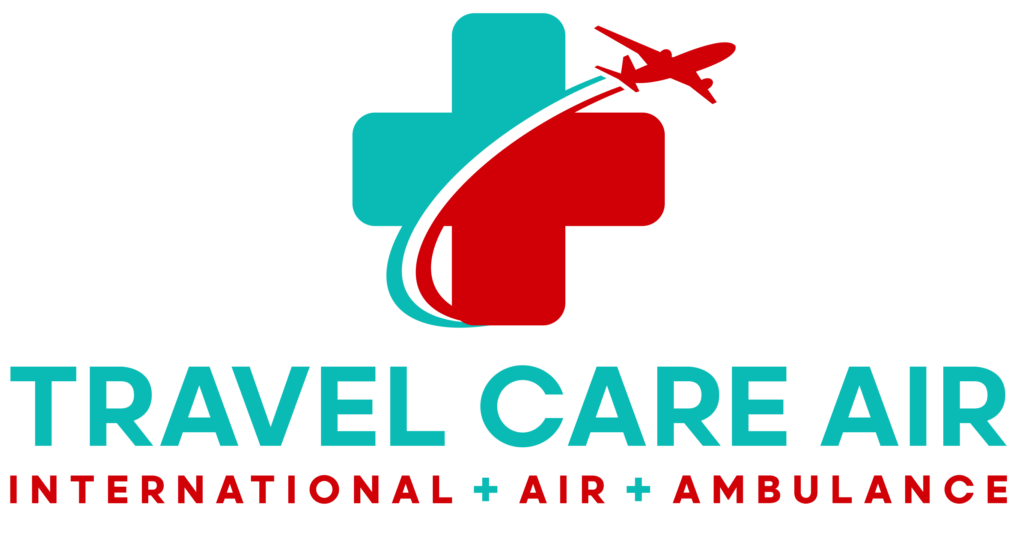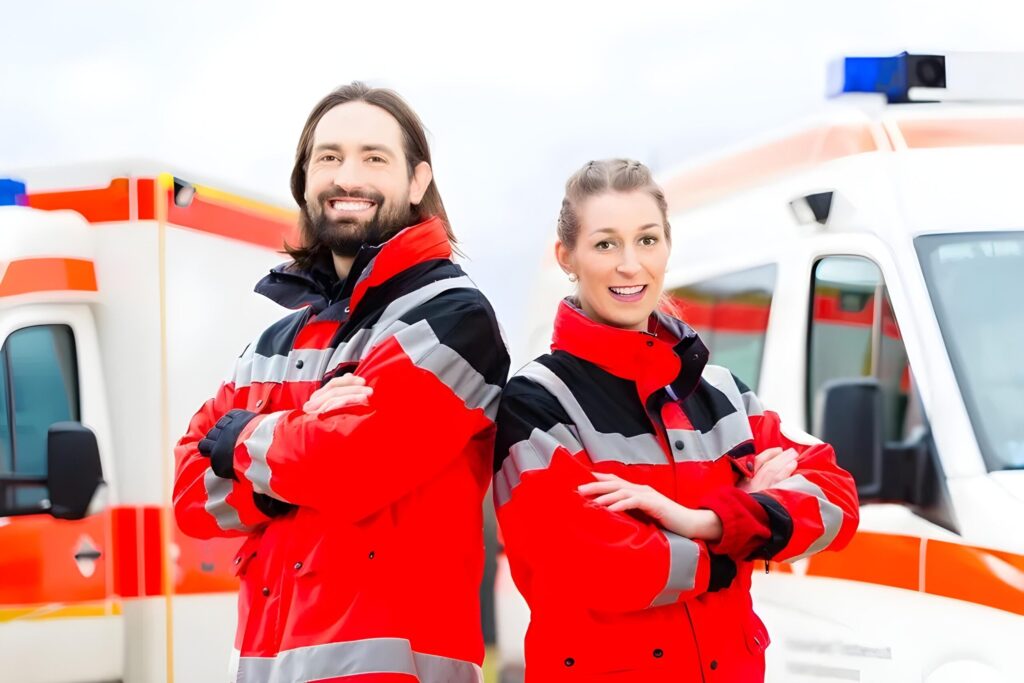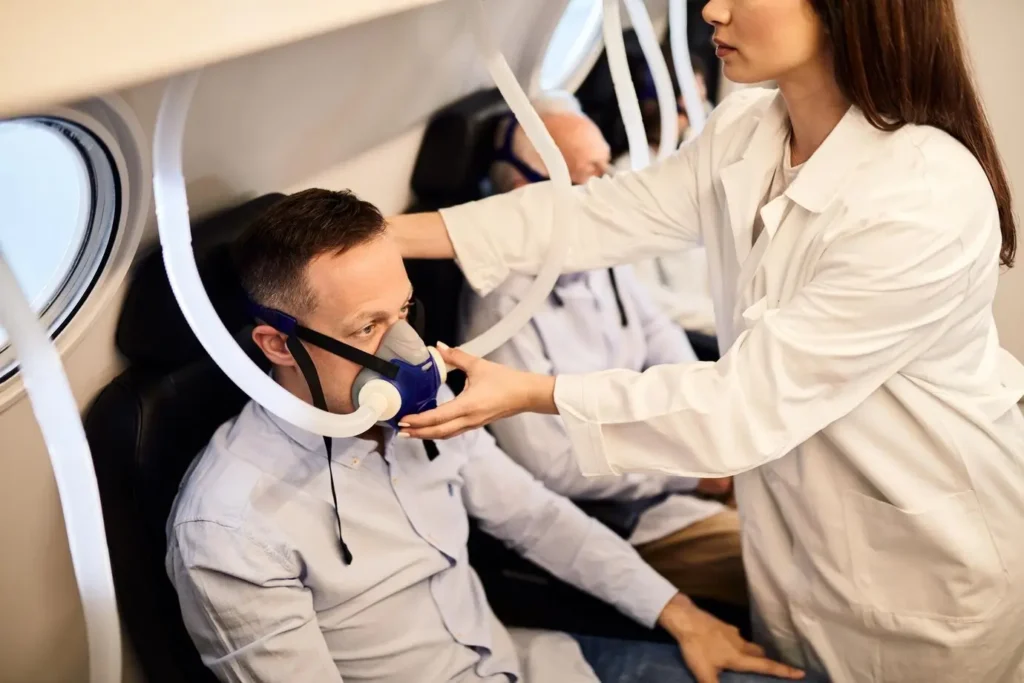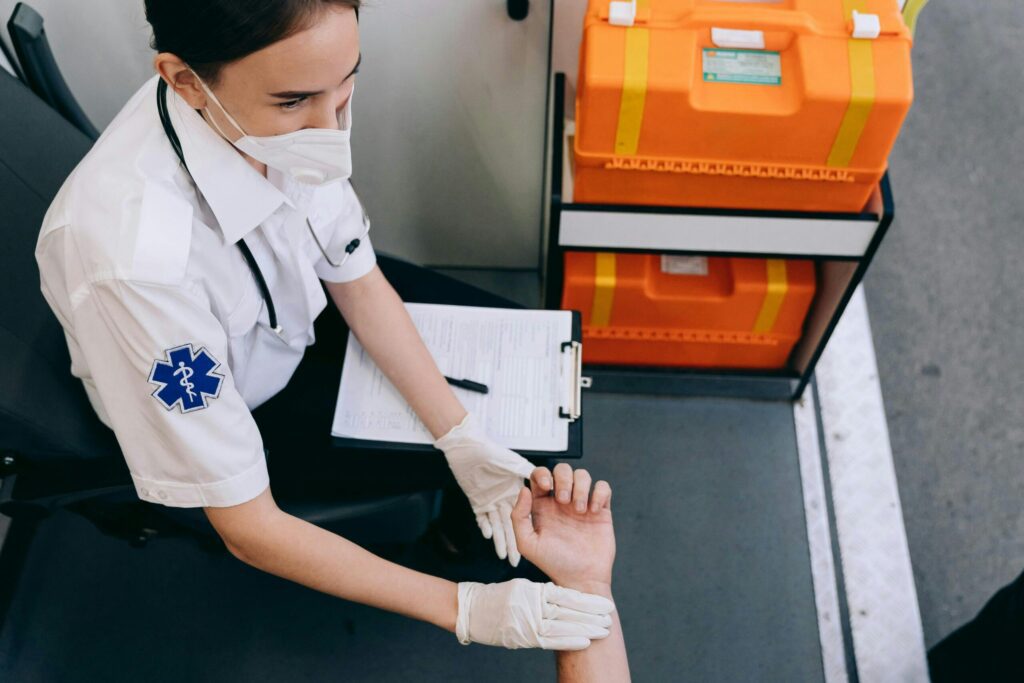Every successful air medical mission relies on having an expert air ambulance medical crew that are all working in perfect coordination. If a patient suffers a heart attack on a remote island or a car accident victim in a rural area urgently needs advanced care, within minutes, a specialized aircraft can be in the air. The pilots have to navigate difficult routes, nurses and paramedics need to stabilize the patient, and coordinators on the ground have to ensure a hospital team is ready once the aircraft lands. It’s a carefully orchestrated operation where every second and every skill matters.
Behind each of these lifesaving flights is a group of professionals who are extensively trained to handle emergencies in unpredictable conditions. The medical flight staff is not only equipped with advanced knowledge of trauma care, critical medicine, and emergency response but also has the calm precision that is needed to make crucial decisions in the air.
Here’s what you’ll learn:
- Who makes up an air ambulance team and what each role contributes to the process.
- The specialized training and certifications that are required for every position.
- How flight coordination and medical care come together seamlessly during every mission.
- What makes these teams so effective in critical and time-sensitive emergencies.
- Why experience, communication, and precision are essential for safe, successful air transport.
The Air Ambulance Medical Crew
Every mission relies on a very precise balance of aviation expertise and advanced medical care. An air ambulance medical crew is made up of professionals who specialize in two equally important areas – flight operations and patient care. When put together, they create a team that can safely transport critically ill or injured patients across any distance.
Each mission includes an air ambulance flight crew that is responsible for dealing with the aircraft, monitoring the changing weather conditions, and ensuring a smooth, safe flight, as well as a team of medical specialists who provide continuous care all throughout transport, from start to finish.
If you’ve ever wondered who works on air ambulance flights, the answer is a group of highly trained professionals with one shared mission – patient survival and safety. Up next, we’ll meet all of the people behind these flights and take a look at their unique roles, qualifications, and responsibilities that make every air medical mission possible.
Meet the Experts – Members of an Air Ambulance Medical Crew
1. Ground Crew Coordinators
Every flight begins long before the patient is ever onboard. Ground crew coordinators are the planners behind the scenes who make sure each mission starts without any delays. They handle all of the logistics like obtaining flight clearances, arranging hospital-to-hospital transfers, confirming medical requirements, and coordinating with customs or local emergency services for international flights.
But, it’s important to understand that their responsibilities go beyond scheduling. They are the bridge between the aviation and clinical sides of the mission. They make sure that all information about the patient’s condition, the receiving facility, and the route is accurate before takeoff. Most coordinators have backgrounds in aviation dispatch, emergency response, or medical transport administration, which gives them the ability to manage multiple urgent details all at once. Their attention to detail and level of calm efficiency are very important to the success of the air ambulance medical crew, ensuring that every flight launches safely and on time.
2. Communication Specialists
Communication specialists are considered the heartbeat of air medical operations. They keep real-time contact between the aircraft, hospitals, and ground teams throughout the entire journey. They also use things like satellite systems and medical dispatch software to monitor the flight path, track weather conditions, and relay any important updates that might affect timing or care coordination.
In high-pressure situations, clear communication can mean the difference between life and death. These specialists are specifically trained to anticipate the needs of everyone involved and to help ensure all parties (like the pilots, medical staff, and receiving hospitals) are in sync. Their ability to stay composed and detail-oriented means higher levels of patient safety and ensures smooth, uninterrupted communication during every single mission.
3. Medical Flight Pilot
The medical flight pilot is responsible for dealing with complex airspace, managing weather conditions, and ensuring every safety protocol is very closely followed from takeoff to landing. Pilots who fly medical missions must hold Federal Aviation Administration (FAA) licensing and undergo specialized emergency transport training. They also have to log hundreds of flight hours and maintain proficiency in operating under high-stress, time-sensitive conditions.
These pilots perform detailed safety inspections before every mission, coordinate with air traffic control, and constantly monitor fuel, altitude, and weather systems. They make some very important decisions under pressure, often while balancing the needs of medical teams and patient stability. The pilot also has to work closely with the air ambulance flight crew to make sure that the aircraft operates at peak performance, because reliability and precision are non-negotiable in emergency medicine.
4. Co-Pilot or First Officer
The co-pilot, also known as the first officer, serves as the pilot’s most-important partner during every single flight. They assist with navigation, radio communication, and coordination with medical and ground teams. The co-pilot’s role is part of a highly important redundancy system…two qualified aviators mean added safety, shared decision-making, and constant awareness no matter what situation arises.
They also help plan the optimal route for patient transfers, making sure that timing and fuel requirements are balanced with the patient’s medical needs. In emergencies, the co-pilot can take over full control of the aircraft, keeping every mission smooth and secure from start to finish.
5. Flight Nurse
A flight nurse provides the same level of care you’d expect in an intensive care unit, only at 30,000 feet. They are highly trained in trauma, critical care, and emergency response, and can handle everything from cardiac arrest to neonatal stabilization while in midair.
Some of their main responsibilities include administering IV medications, interpreting cardiac monitors, managing ventilators, and making sure that the patient remains stable all throughout transport. To qualify, a flight nurse must be a registered nurse (RN or BSN) with several years of experience in emergency or critical care. They also have to hold certifications like Advanced Cardiac Life Support (ACLS), Pediatric Advanced Life Support (PALS), and sometimes Neonatal Resuscitation Program (NRP) training.
Flight nurses are the backbone of the medical flight staff. They have to have the unique ability of being able to balance compassion with precision. Staying calm under pressure and their ability to make quick, well-informed decisions can mean the difference between stabilization and decline during flight.
6. Flight Paramedic
Working alongside the nurse, the flight paramedic focuses on quick patient assessment, airway management, and trauma stabilization. These professionals are certified as Nationally Registered Paramedics and often hold some additional credentials like Critical Care Emergency Transport Paramedic (CCEMTP) or Flight Paramedic-Certified (FP-C).
Their field experience is what helps to give them a level of adaptability that is unmatched. They’re experienced with managing difficult emergencies in confined spaces, using advanced life support techniques, and being able to respond right away to even the slightest change in the patient’s condition. Flight paramedics and flight nurses work in perfect harmony together, making sure that every second of care is deliberate and precise.
7. Respiratory Therapist or Specialist
For patients who depend on ventilators or require advanced airway management, respiratory therapists are often present on a flight. They oversee oxygen delivery, adjust ventilator settings, and make sure that the patient’s respiratory system stays stable throughout the journey.
These specialists also prepare the cabin environment to match hospital-level oxygen and pressure standards, especially for patients with lung or cardiac conditions. Their knowledge of physiology and equipment operation is very important, especially during high-altitude transport, where oxygen levels can often fluctuate. Their expertise and experience ensures that even the most fragile patients remain stable during an air ambulance flight.
8. Medical Director or Physician Advisor
Every air medical program must operate under the supervision of a medical director or physician advisor. This board-certified physician provides medical oversight, establishes clinical protocols, and ensures quality control for every mission. They’re available 24/7 to help with complex cases, review patient care plans, and assist the onboard team with decision-making when needed.
The medical director’s role ensures consistency and accountability, which helps to guarantee that every aspect of a patient’s care meets all national and international medical standards. They are the ultimate safeguard for patient outcomes and the foundation of every high-performing air ambulance medical crew.
9. Training and Certification Teams
Excellence in air medical transport doesn’t end with hiring qualified professionals…it continues in between every flight with rigorous, ongoing education. Air ambulance professionals are continuously developing and enhancing their skills. Every team member, from pilots to paramedics, participates in annual simulations, emergency drills, and safety refreshers.
Training programs follow the standards that are set by organizations like the Commission on Accreditation of Medical Transport Systems (CAMTS), the Federal Aviation Administration (FAA), and the National Association of Air Medical Services (AAMS). This ongoing education ensures that the team can adapt to the ever-evolving medical technology, new safety protocols, and emerging best practices in critical care transport.
How Teamwork Saves Lives
Every single second counts when a medical emergency strikes, and that’s when the air ambulance medical crew jumps into action. Picture a patient who has just suffered a severe stroke in a remote area. Within minutes, dispatchers coordinate with hospitals, pilots prepare the aircraft, and the medical flight staff readies all of the advanced equipment for transport.
As the aircraft lifts off, constant communication connects everyone involved. The pilot updates the team on flight conditions while the nurse and paramedic monitor the patient’s vitals and adjust the care plan as needed. On the ground, coordinators relay updates to the receiving hospital so the treatment team is ready before landing.
This seamless coordination isn’t luck…it’s the result of strict training, well-established protocols, and shared trust. Each professional knows their role and anticipates the others’ needs, making sure that there is never a pause in patient care, even at 30,000 feet above the ground. It’s this collaboration, precision, and commitment that make every mission not just possible, but lifesaving.
Travel Care Air: 45 Years of Saving Lives, One Flight at a Time
Every life saved in the air starts with the dedication and skill of a highly experienced and well-trained air ambulance medical crew. Each member (from the air ambulance flight crew to the nurses, paramedics, and coordinators on the ground) plays a very important role in making sure that every patient receives hospital-level care all throughout the journey.
For more than 45 years, Travel Care Air has built its reputation on trust, safety, and experience. Our teams are made up of highly trained professionals who treat every mission as a promise to bring patients and families the best possible care when it matters most.
If you or a loved one ever need air medical transport, you deserve to work with experts who are dedicated to safety, transparency, and support every step of the way. Contact Travel Care Air today for guidance, information, or help arranging your air medical transport needs with a team that truly cares. You can reach us 24/7 at 1-800-524-7633 or contact us online.
Frequently Asked Questions
Who works on an air ambulance?
An air ambulance medical crew is made up of several highly trained professionals who work together to provide safe and efficient care. The team usually includes pilots, a flight nurse, a flight paramedic, and medical or ground coordinators who manage logistics and communication. Each member plays a very important role in making sure that patients receive hospital-level treatment from the moment they’re picked up until they arrive at their destination.
What qualifications do air ambulance flight crews have?
Members of the air ambulance flight crew hold extensive certifications and training in both aviation and emergency care. Pilots are FAA-licensed with years of specialized experience in medical transport, while nurses and paramedics hold advanced life support certifications and critical care credentials. Continuous education, simulation exercises, and training for air ambulance operations ensure every team member is ready for any situation.
What does a flight nurse do on a medical flight?
A flight nurse provides advanced, in-flight medical care for critically ill or injured patients. Their responsibilities include administering medications, monitoring vital signs, managing ventilators, and responding quickly to changes in condition. They work closely with paramedics and physicians to stabilize patients and maintain communication with the receiving hospital.
How are air ambulance pilots trained?
A medical flight pilot is trained to handle emergency aviation operations under intense conditions. They must complete FAA licensing, advanced navigation, and weather safety training, as well as ongoing emergency procedure certifications. These pilots are experts at balancing flight safety with the medical team’s needs, ensuring each mission runs smoothly and securely.
What makes an air ambulance medical crew different from regular hospital staff?
Unlike hospital teams, medical flight staff work in a compact, fast-moving environment where every second matters. They’re trained to perform critical procedures in-flight, often with limited resources, while managing altitude, turbulence, and time constraints. This specialized expertise allows them to deliver consistent, high-quality care anywhere in the world.
How do ground coordinators and pilots work together during a mission?
Ground coordinators and pilots collaborate constantly to keep every mission running safely and efficiently. Coordinators handle logistics, route planning, and hospital communication, while the air ambulance flight crew manages real-time flight conditions. Their teamwork ensures smooth coordination from takeoff to landing, reducing stress for both the patients and families involved.



